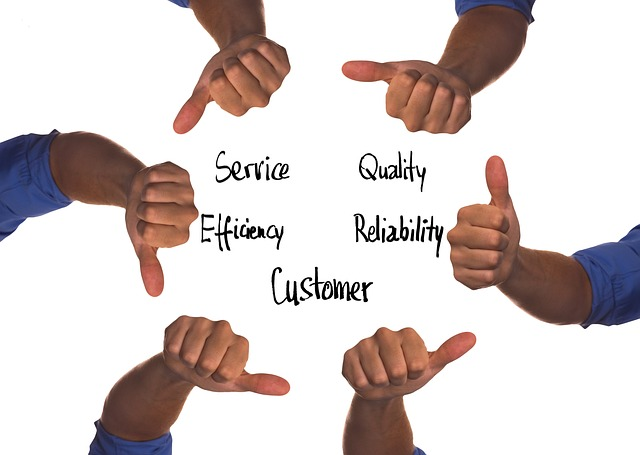Hi, I’m Molly Palmer, a QA Expert deeply involved in the nuances of customer interactions. In the fast-paced world of e-commerce, reply quality in e-commerce customer service replies is a critical driver of customer satisfaction, loyalty, and ultimately, your bottom line. Shoppers expect quick, accurate, and empathetic support, and failing to deliver can send them straight to your competitors. A significant percentage of consumers base purchasing decisions on service quality.
But how do you systematically ensure your team’s replies consistently hit the mark? It requires a robust approach to both detect areas needing attention and actively improve reply quality. Based on my experience and industry best practices, here are 18 strategies for improving reply quality detection and enhancement within e-commerce customer service.

Why Replay Quality in E-commerce Customer Service Significant?
Customer service interactions are often the most direct human touchpoint a customer has with an online brand. Every interaction shapes their perception. Excellent service leads to positive reviews, testimonials, and social media mentions, building social proof and enhancing your brand’s reputation. Conversely, unresolved issues or frustrating service experiences can quickly lead to negative reviews that deter potential customers. As many analyses show, customer service is a key determinant of e-commerce success and directly influences how customers perceive an e-commerce business’s overall trustworthiness and credibility.
Achieving high-quality service involves focusing on several key dimensions identified by researchers:
- Website Usability: Ensuring the platform is easy to navigate and use.
- Information Quality: Providing accurate, complete, and relevant product and policy information.
- Reliability: Fulfilling promises accurately and dependably (e.g., order accuracy, on-time delivery).
- Responsiveness: Addressing customer inquiries, issues, and feedback promptly and effectively.
- Assurance: Instilling confidence and trust through professionalism, security, and competence.
- Personalization: Tailoring interactions and offerings to individual customer needs where possible.
Foundational Setting: Replay Quality in E-commerce Customer Service
Before you can improve, you need to understand where you stand. These initial strategies focus on establishing benchmarks and gathering core data.
1. Define Clear Quality Standards & Scorecards
You can’t measure what you haven’t defined. Create detailed Quality Assurance (QA) scorecards outlining specific criteria for a ‘good’ reply. This includes elements like accuracy, completeness, tone, empathy, grammar, adherence to brand voice, and resolution effectiveness. This forms the bedrock for consistent reply quality detection.
2. Implement Regular Manual QA Audits
Systematically review a sample of agent interactions across all channels (email, chat, social media, phone). Trained QA specialists, like myself, use the defined scorecards to provide objective assessments. This is fundamental to understanding nuanced quality issues that automation might miss.
3. Utilize Customer Satisfaction (CSAT) Surveys
Directly ask customers about their satisfaction with the support interaction immediately after it concludes. While CSAT gives a general pulse, segmenting scores by agent or issue type can help pinpoint areas where reply quality might be impacting satisfaction in your e-commerce customer service.
4. Analyze Customer Effort Score (CES)
How easy was it for the customer to get their issue resolved? High effort often correlates with poor communication or unclear replies. Tracking CES provides insights into the friction caused by potentially subpar interactions.
5. Monitor First Contact Resolution (FCR)
Were customers’ issues resolved in the first interaction? A low FCR rate can indicate replies aren’t comprehensive, accurate, or clear enough, forcing customers to follow up. Improving FCR is often linked to enhancing reply substance.
Leveraging Data & Feedback for Deeper Detection
Go beyond basic scores and tap into richer data sources to uncover quality trends and specific issues.
6. Track First Response Time (FRT)
While primarily a speed metric, consistently slow FRT can lead to rushed, lower-quality initial replies. Monitoring this helps ensure agents have adequate time, but it must be balanced with quality expectations. As noted in resources like Cue’s analysis, FRT directly impacts satisfaction.
7. Analyze Average Handle Time (AHT)
Similar to FRT, AHT needs context. Unusually short AHT might suggest incomplete answers, while excessively long AHT could indicate inefficiency or unclear communication. Analyze AHT alongside quality scores for a complete picture.
8. Mine Customer Feedback (Reviews, Social Media, Direct)
Don’t just rely on surveys. Actively monitor online reviews, social media mentions, and direct email feedback for qualitative insights into reply quality. Forrester research often emphasizes the value of acting on customer feedback for service improvement.

9. Use Text Analytics & Sentiment Analysis
Leverage technology to automatically scan interaction transcripts for keywords, phrases, and overall sentiment (positive, negative, neutral). This can flag interactions with potentially problematic language or tone at scale, aiding reply quality detection.
10. Review Escalation Rates
Track how often interactions need to be escalated to a supervisor or senior agent. High escalation rates can signal that frontline agents are struggling to provide effective or satisfactory replies.
Actionable Improvement Strategies: Enhancing Reply Quality
Detection is only half the battle. Use the insights gathered to implement targeted improvements.
11. Provide Targeted Coaching & Feedback
Use QA scores and specific examples from audits to provide personalized, constructive feedback to agents. Focus coaching on specific areas needing improvement, whether it’s tone, accuracy, or process adherence.
12. Develop and Maintain a Comprehensive Knowledge Base
Equip your agents with an easily accessible, up-to-date internal knowledge base. This ensures they can quickly find accurate information, leading to higher quality, more consistent replies for your e-commerce customer service team.
13. Conduct Regular Training & Refresher Sessions
Ongoing training is crucial. Cover topics like product updates, new procedures, communication skills (especially empathy and de-escalation), and best practices for using service tools. Keeping skills sharp is vital, as highlighted by many customer service improvement guides.
14. Foster Peer Learning & Calibration Sessions
Hold regular calibration sessions where agents and QA specialists review interactions together to ensure everyone understands the quality standards consistently. Encourage peer mentoring and sharing of best practices.
15. Implement and Refine Canned Responses & Templates
Use templates for common inquiries to ensure speed and consistency, but *crucially*, train agents to personalize them. Over-reliance on generic responses degrades quality. They should be a starting point, not the entire reply.
16. Utilize AI-Powered Agent Assist Tools
Modern AI tools can provide real-time suggestions to agents during interactions, prompting them with relevant knowledge base articles, suggesting appropriate phrasing, or flagging potential compliance issues. This can significantly boost reply quality and consistency.
17. Optimize Customer Service Software & Tools
Ensure your CRM or customer service platform is efficient and provides agents with the context they need. A clunky system hinders an agent’s ability to deliver quality replies quickly. Look into tools recommended by platforms like Freshworks or Salesforce for e-commerce.
18. Establish Clear Internal Communication Channels
Ensure updates on policies, products, or promotions are communicated clearly and promptly to the entire customer service team. Misinformation leads directly to inaccurate replies and poor customer experiences.

Detecting and improving reply quality in e-commerce customer service is not a one-time project. It’s an ongoing commitment. By implementing these 18 strategies, you create a virtuous cycle: detection informs improvement, and improved processes lead to better data for future detection. Consistently monitoring and refining your approach, leveraging both human oversight and technology, is essential for delivering the high-quality support that builds customer trust and drives e-commerce success.
As a QA Expert, I encourage you to start implementing these strategies today. Measure your progress, adapt to feedback, and watch how a focus on reply quality transforms your customer interactions. Which of these strategies will you prioritize first?



